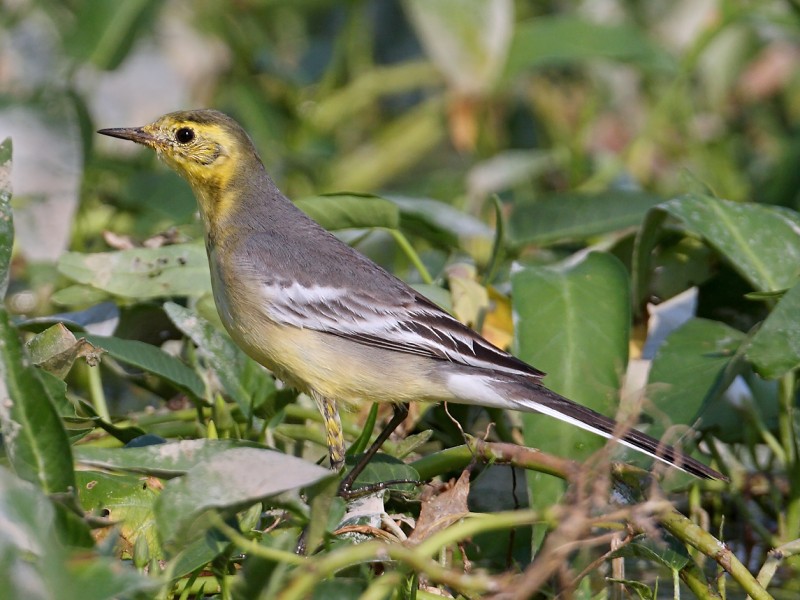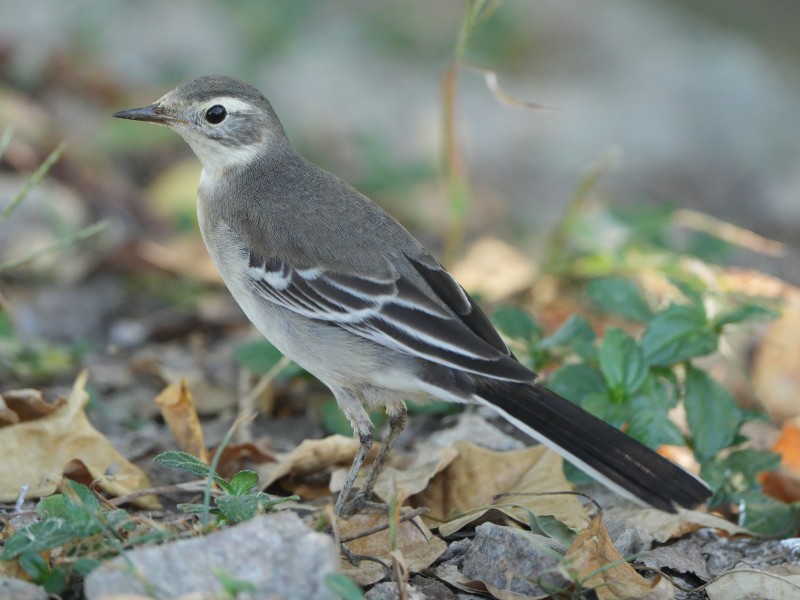Citrine Wagtail Motacilla citreola 黃頭鶺鴒
Category I. Scarce to uncommon winter visitor and passage migrant to freshwater marsh and wet agriculture.
IDENTIFICATION

Apr. 2010, Michelle and Peter Wong. Adult male, breeding plumage.
Slightly smaller and shorter tailed than Eastern Yellow Wagtail. Adult male citreola in breeding plumage has bright yellow head and underparts, grey upperparts apart from black band on nape and two white wing bars. Males of the subspecies M. c. calcarata can be distinguished in breeding plumage by black upperparts. Adult female in breeding plumage has yellow supercilium that surrounds the pale-centred ear coverts and paler underparts with whitish undertail coverts.

Nov. 2007, Michelle and Peter Wong. First-winter, presumed male.
The dull, brown-tinged and worn greater coverts and tertials indicate this is a first-winter, while the brightness of the yellow around the head suggests a male. Most birds occurring in HK appear to be in their first-winter.

Oct. 2013, Michelle and Peter Wong. Adult.
That this is an adult is indicated by the broad white fringes to coverts and tertials. Sex is uncertain, though males generally have more yellow on the head and a greyer mantle.

Oct. 2024, Paul Leader. First-winter.
First-winter birds are grey and white and do not show yellow until early or midwinter. The supercilium is broad and usually clearly surrounds the rear of the pale-centred ear coverts (the latter rarely shown by some Eastern Yellow Wagtails of the form taivana), and the lores are pale. Entirely grey and white birds such as this are rarely seen in HK.
VOCALISATIONS
Very similar to the typical flight call of Eastern Yellow Wagtail, a harsh and somewhat explosive ‘tzreep’, but slightly lower in pitch and more rasping, and there is a more distinct terminal fall in pitch.
DISTRIBUTION & HABITAT PREFERENCE
The favoured site for this species is undoubtedly the well-watched Long Valley, where the wet agricultural fields attract large numbers of wagtails; almost all records of more than one bird have occurred there. Otherwise, areas of freshwater marsh, wet grass and fish ponds are favoured. Appears to be more closely associated with wetland habitats, as the only records from non-wetland sites have occurred at Ho Man Tin and Chek Lap Kok, where singles were seen on grassy areas.
OCCURRENCE
Citrine Wagtail was previously considered rare in HK. In 1994 there was an upsurge of records partly due to a greater understanding of the species’ field characters and more attention being paid to flocks of migrant and wintering wagtails. Figure 1 illustrates the pattern of occurrence from 1999 to 2020 and indicates that Citrine Wagtail is a passage migrant and winter visitor largely from October to April. Highest numbers occur from late autumn to midwinter, while spring passage occurs from the second half of March. Extreme dates are 30 September in three years and 10 May 1995. The highest count is of five birds on 12 January and 5 February 2014 and 17-18 April 2010, all at Long Valley.
BEHAVIOUR, FORAGING & DIET
Insectivorous, capturing prey on ground, vegetation and occasionally in flight from the ground. No discernible difference from Eastern Yellow Wagtail.
RANGE & SYSTEMATICS
Breeds from northeast Europe east to central and north Siberia and thence south through Mongolia and Transbaikalia to central and southwest China; winters from southwest Asia and the Middle East east through the Indian subcontinent to north Indochina and south China (Tyler and Kirwan 2020). In China a summer visitor to the western half of the country, the north and northeast, and a winter visitor to southern coastal provinces (Liu and Chen 2020).
Two subspecies are recognised, with the nominate breeding from northeast Europe through central Siberia to Mongolia and northeast China, and wintering from India to southeast Asia, including HK. M. c. calcarata breeds from east Iran to central China and winters in south Asia. Based on features of adult males, only nominate citreola has occurred in HK, though calcarata could occur.
CONSERVATION STATUS
IUCN: Least Concern. Population trend increasing.
Figure 1.

Liu, Y. and Y. H. Chen (eds) (2020). The CNG Field Guide to the Birds of China (in Chinese). Hunan Science and Technology Publication House, Changsha.
Tyler, S. and G. M. Kirwan (2020). Citrine Wagtail (Motacilla citreola), version 1.0. In Birds of the World (J. del Hoyo, A. Elliott, J. Sargatal, D. A. Christie, and E. de Juana, Editors). Cornell Lab of Ornithology, Ithaca, NY, USA. https://doi.org/10.2173/bow.citwag.01

